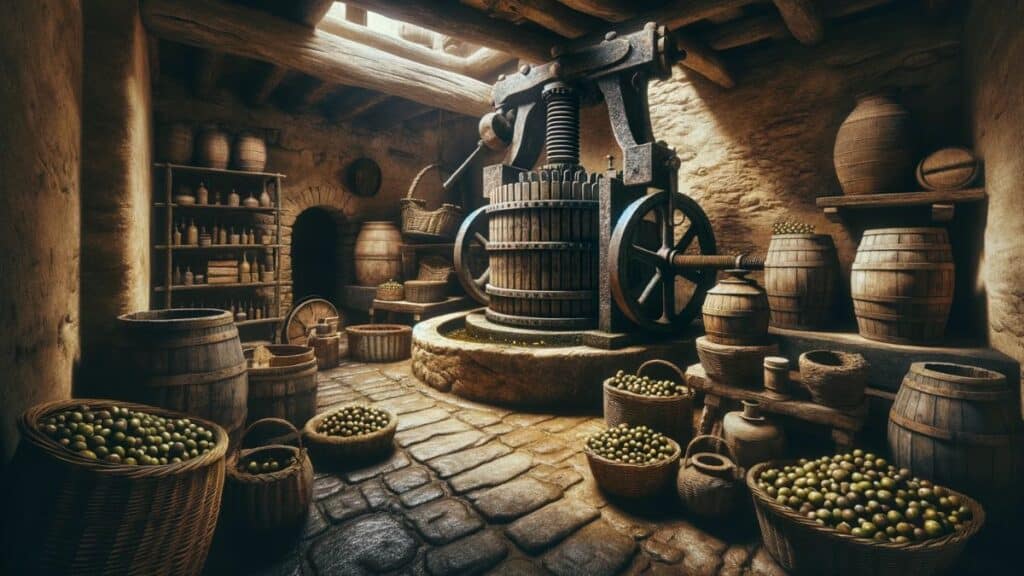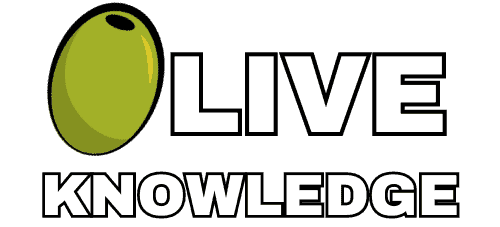How Many Times Can You Press Olives When Making Olive Oil?
Olive Knowledge is a part of Amazon Associates. As an Amazon Associate, we earn from qualifying purchases. Read our Affiliate Disclosure to learn more.

The goal with olives is to get as much olive juice (oil) as possible when pressing them. In this post, I’ll show you how many times you can press olives and what I recommend you if you want to get the highest quality EVOO.
Key Takeaways:
- Olives can be pressed three times in total.
- To get high-quality olive oil, you should only press olives once (first press).
- Further pressing (2nd and 3rd time) products olive oil of lower quality, which may even not be edible.
How Many Times Can Olives Be Pressed?
As I already said in the beginning, olives can be pressed three times. Now, I’ll explain to you what each pressing does to olives.
1st Pressing of Olives:
1st pressing of olives is usually done as cold-pressed, which means that the temperatures inside the machinery never go above 27 °C (80 °F). That’ll allow olives to extract only the highest quality oils from them, and you’ll get virgin olive oil.
Depending on the quality of oil, virgin oil can be:
- extra virgin, with up to 0.80% free fatty acids and median taste defects = 0
- virgin, with up to 2% free fatty acids and a median flaw defect ≤ 3.5
- Lampante olive oil – more than 2% free fatty acids, it’s not edible and should be refined (this happens if the fruit is of terrible quality – rotten fruits, fruits picked from the ground, etc.)
2nd Pressing of Olives
2nd pressing of olives is made after all the extra virgin olive oil is extracted from the fruit. They’ll use the mash from the first press (there’s still some oil left in it) and go through the oil extraction process again. However, they’ll add heat to the process this time, so more oil is extracted. That oil is called light olive oil.
3rd Pressing of Olives
3rd pressing of olives is usually done in another facility, and that won’t create edible olive oil. After two pressings, almost all oil content is extracted, but some of it is left in the fruit. In the 3rd pressing, facilities always use some solvents and chemicals to extract as much oil as possible. The oil they’ll get is called olive pomace oil. That oil isn’t edible and should be refined and then mixed with extra virgin olive oil.
How Many Pressings Should You Do?

The answer to this question depends on whether you want high-quality oil or plenty of olive oil. If you ask me, there’s no doubt. You should only do one cold pressing and make high-quality extra virgin olive oil (EVOO).
That way, you’ll have highly healthy olive oil, which can be sold for a higher price. If you’re only making olive oil for your family’s needs, it’s even more important – since you want all the best for yourself and your family.
More Pressings = Lower Quality of Olive Oil
More pressings mean a lower quality of olive oil. As you can see in the examples above, the 3rd pressing will make pomace olive oil, which isn’t edible and should be refined and then mixed with some virgin olive oil. And even with that, it can only be used for frying or similar things – but it doesn’t have all the healthy benefits EVOO has.
Process Olives in Modern Oil Mills
Modern oil mills have the machinery to extract as much olive oil from the fruit as possible. Machinery in oil mills is now much better than it was 30 years ago, so the yield from the fruit is much better, too.
The best and most modern oil mills can extract up to 92% olive oil from the fruit. However, anything more than 86% is acceptable, and you can go with them. If the mill can’t extract more than 86% of the oil from the fruit, look for a new one.
Related: The Process of Making Olive Oil
For instance, if 100kg of olives have 20% (20kg) of oil content, the best olive oil mills will be able to extract 92% of it, which is 18,4 kg. That’s great, and you should be satisfied.
Do Mills Charge Extra For Additional Pressings?
Whenever you’re looking for an olive mill to process your olives and make the olive oil, you should know that prices are always shown only for one pressing.
So, if you want to extract more olive oil from your olives and want quantity over quality, you can ask them and make two pressings instead of one. However, it might be a bit more expensive. It’s hard to speak about prices, but yes, oil mills will charge you extra for additional pressings.
Also, not all olive mills will have the machinery to do two pressings because they only have cold-pressing systems. So, if you want to add some heat to the process to extract extra oil, you should check if the oil mill has that option.
I hope not many people do it, especially if they’ll later sell their mixed olive oil as Virgin olive oil or, even worse, extra virgin olive oil.
Conclusion
Modern procedures of extracting olive oil from olives are fantastic and will always extract as much olive oil as possible from 1st press only. In my opinion, you should never do a 2nd press, which may give you a little bit more oil, but it won’t be as healthy, and you won’t be able to price it higher.
So, instead of doing more presses and reducing the quality of the olive oil, the best thing you can do is find a modern oil mill that’ll yield more than 86% of the oil content from the fruits.
That way, you’ll get satisfying amounts of olive oil produced, which will also be of high quality so that you can sell it for more money.
Similar Articles:
